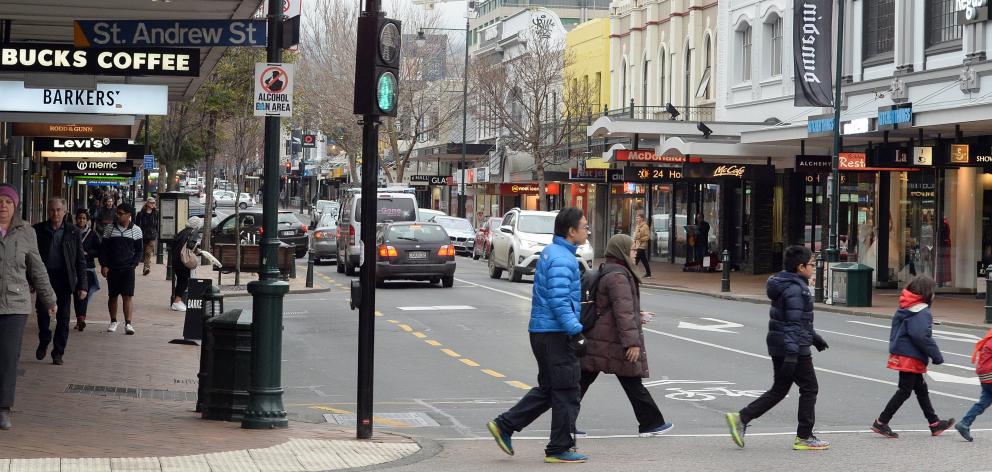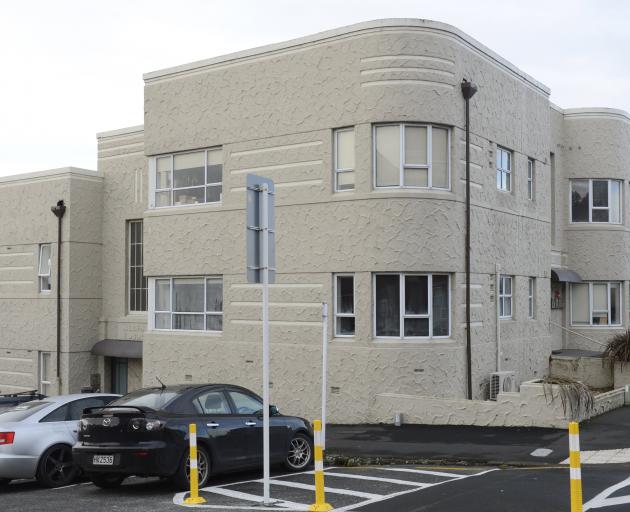
Around Dunedin, the building stock supply is barely meeting demand in any sectors, from residential, office, retail, private rental, apartments, and student accommodation, through to the industrial sector.
Pressure is building on various property fronts, from population growth, the attraction of high rental yields, low interest rates and local gross domestic product growth, Colliers’ valuation director Joe Chapman said.
Much of the pressure is further underpinned by major investment under way or planned by the University of Otago and the $1.4 billion hospital build programme.
"The Dunedin property market remains in a growth and expansion phase," Mr Chapman said.
However, rental housing around Dunedin has been described as "at crisis point", by Colliers International’s 2018-19 market review and outlook.
As the high demand for Dunedin properties increases, landlords are opting to sell, especially in the face of the Healthy Homes Bill, which now requires them to fully insulate properties or boost heating to make them warm and dry.
"Many previously-rented homes are being sold into the home ownership market," Mr Chapman said.
Colliers said there was anecdotal evidence suggesting many more than 50% of Dunedin’s rental houses sold were now owner-occupied, rather than rented out.

Both the Real Estate Institute of New Zealand (REINZ) and government agency Quotable Value New Zealand have Dunedin’s median residential prices and average values aligned close to $409,000 for May, against a year ago.
Last week the wider Dunedin area booked a record median price for May, with the REINZ data showing prices had risen 15.2% from a year ago, to hit $409,000.
Similarly, Quotable Value data earlier in the month showed Dunedin was one of the few main centres in the country to maintain price growth , rising 9.4% on a year ago to $408,827.
Dunedin’s apartment market is not yet large enough to generate its own REINZ or QV data, but Colliers said anecdotally apartment sales volumes were picking up, Mr Chapman said.
Some of the new developments were selling quickly, buoyed by the positive sentiment in the residential market, he said.
In March, an older apartment complex of six two-bedroom units at the top of View St were sold individually, for prices ranging from $369,000 to $421,000, to local and other South Island buyers.
All six sold with 15 days, Mr Chapman said.
There had been more conversions of older commercial buildings into apartments, anecdotally pointing to growing demand for inner-city living, the report said.
"The outlook for value growth is positive, especially for new, high quality units," Mr Chapman said.
In Dunedin’s residential market, Colliers said there had been strong growth during 2017 and so far this year demand was strong throughout the value range.
"Sales activity is particularly strong high in the mid-value range, around $300,000 to $450,000 ... but also strong over the $450,000 level," Mr Chapman said.
The volume of listings around the city remained constrained, which was driving up increased competition and a high turnover of sales, he said.
There were 29 total residential Dunedin sales over $1 million in the year to March 2017, but this jumped more than 34% to 39 for the past year to March.
As with the private rental market, the student accommodation rental market is likely to have more older-style properties coming on to the market over 2018-19, because of the extra compliance costs that accompany the Healthy Homes Bill.
"The threat of legal action from tenants over unlawful tenancies is also becoming a greater issue," Mr Chapman said.
After a few years of negligible rental change, Colliers said an increase in university student numbers would see a reduction in vacant flats, causing demand and rental levels to increase over 2018-19.
"Out of town and overseas buyers are becoming more active due to the low cost of entry to the Dunedin market, relative to other cities," Mr Chapman said.
Both buyers and tenants were now favouring higher-quality, refurbished or new properties.
Rents in Dunedin’s "prime central campus" rose from $190 in 2017 to $210 for a furnished, new-build bedroom and from $260 to $290 for a purpose-built studio unit.
The average weekly room rent in that area rose from $130-$140 in 2017 to $140-$150, he said.
Mr Chapman said there was a big increase in sales of self-contained studios, up from eight in 2016 to 17 last year, suggesting a shift in buyer preferences towards higher-returning studios.
He said from 2019, the higher student allowances likely meant the extra allowance would be used to fund a better quality flat.
However, investors would be likely to "act cautiously", given government proposals to ring-fence rentals to stop offsetting losses, and the extension of the "brightline" ownership period, from two to five years.
Also, insurers had been excluding some parts of older buildings from cover, and banks were subsequently refusing to lend, he said.
Mr Chapman said University of Otago student numbers were expected to increase by a further 1100 full time equivalent students by the end of 2018, meaning lower flat vacancy rates during 2019-20.
Around Dunedin, the retail property sector vacancy rates remained "very low", due to high demand, although vacancy rates for secondary-ranked properties was rising.
Tenant demand was "very high" for bulk retail space, with a lack of available development land preventing several bulk retail tenants from entering the market, Mr Chapman said.
"Local businesses are becoming squeezed out of the prime George St market by national and international chains," Mr Chapman said.
While there was strong buyer demand for prime retail investments, Mr Chapman said landlords were holding on to strongly performing assets.In office property around Dunedin, vacancy rates were at historic lows as strong business confidence meant higher demand for office space.
"Rents are expected to remain steady or edge upwards due to low vacancy," he said.
However, he noted older Dunedin office spaces were becoming more difficult to lease out, because of the high cost of upgrading them, which was a deterrent to landlords, he said.
Mr Chapman did highlight that more than 8000sqm of "modern character office space" had been added to Dunedin, from two conversion projects in Vogel St and also redevelopment of the former Harvest Court Mall in George St.
On the industrial property front, demand was outweighing supply, and little prime stock was available, either for lease or purchase, Mr Chapman said.
There remained a lack of available freehold development land across the market.
Mr Chapman said while many industrial occupiers in Dunedin were keen to relocate to larger premises, many had to stay put until more options came along.
"Newly-built state of the art industrial properties have upped the ante for prime rents in Dunedin city, which are now among the highest in the country," he said.
Mr Chapman said because of the relatively low cost of entry into Dunedin’s property market compared with other main centres and "hotspots" such as Queenstown and Tauranga, the city was attractive to investors from across the country.
While there was downward pressure on rental yields in Dunedin, they remained at more attractive levels than cities elsewhere, and relative to bank deposit rates, Mr Chapman said.
Market makeup
What makes up Dunedin’s 2017 university rental market. —
• 48% Dunedin buyers.
• 23% North island buyers.
• 18% overseas buyers.
• 4% South Island buyers.
• 7% undisclosed.
The 2017 students came from ...
• North Island more than 8000, steadily rising.
• Dunedin Plunge past eight years from almost 5500 to 3000.
• Rest of South Island Consistent — near 4000.
• Overseas Rising gently, about 3200.
• Otago-Southland gentle decline to dip under 2000.
SOURCE: COLLIERS INTERNATIONAL











